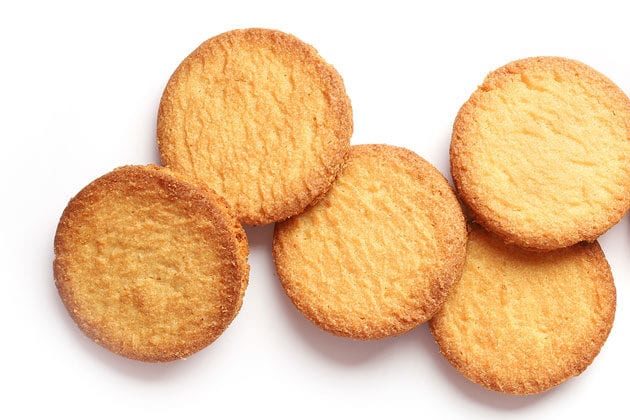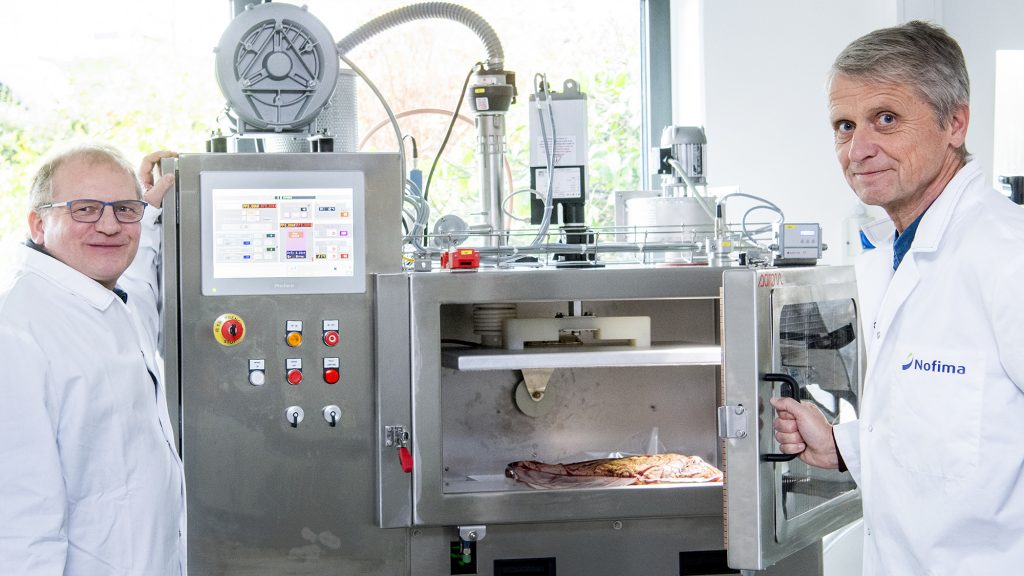Radio waves in food production

Did you know that radio waves can be used for more than broadcasting music and banter over the ether? They can in fact also heat food in a gentle way.
Great potential
We are familiar with microwave ovens, but most of us probably associate radio waves with the radios of bygone days. However, radio waves in the frequency range between 10 and 50 MHz are actually a technology with great potential to heat food.
As early as fifty years ago, radio waves were used to thaw frozen food and for the preservation of meat. In Norway, radio waves are used by several businesses to thaw raw materials to be used in food production. Internationally, radio wave technology is used more extensively, including for reheating purposes. Radio frequency (RF) heating is commonly used for both drying, baking and thawing.
So far there hasn’t been much application of this process for pasteurization (brief, rapid heating to kill bacteria), but there will be great benefits if this technology succeeds. The traditional pasteurization processes use saturated steam or pressurized hot water, which causes the temperature of the product to increase slowly and unevenly, which often results in overheating of the outer layers of the food and a subsequent loss in quality.
Why should we use radio waves?
There are great advantages to heating food with radio waves. As the products are heated from within, the heating becomes much more energy efficient, and in most cases it is also much faster to heat the food with radio waves than with traditional heating methods such as boiling and frying.
RF technology’s ability to quickly transfer energy directly to the product minimizes the heating load, allowing the product to retain its beneficial qualities.
Moreover, RF equipment requires less space compared to machines based on conventional heating technologies, which are associated with long heating times and require large product volumes being processed at all times. Because the process does not emit any heat to the environment, RF heating is more efficient, economical and environmentally friendly.
The main challenge for the development and introduction of new RF processes is to avoid uneven heating due to the products varying in size, shape and other characteristics.
How does it work?
Radio waves are electromagnetic, and can heat food by exposing it to an electric field. The method can be used on most foods, since they are what we call “dielectric”. This means that they contain polar molecules that are positively and negatively charged, like water molecules.
When such foods are placed in an electric field, polar molecules align with the field and rotate continuously to align with the field when it switches. This creates friction between the molecules, and this electromagnetic energy is converted to heat which increases the temperature of the food. Dissolved charged particles (ions) in the food also contribute to heating it, as the ions move back and forth in the food, creating friction and heat.
While microwaves mainly generate heat through the dipolar effect of water, heating from radio waves is mostly caused by ion movement.
What is the difference between radio waves and microwaves?
Both radio waves and microwaves are well suited for heating food. However, radio wave heating has several advantages over microwave heating.
RF heating is simpler than microwaves in that the heating occurs in an electric field between two electrodes that go in one direction, as opposed to a microwave oven where the energy field is much more unevenly distributed. The construction of large RF heating systems is therefore simpler, and the technology is well suited for use in continuous processes where the products are heated while they are moving on a conveyor belt through a “tunnel”.RF processing uses lower frequencies than what we use in microwave ovens, which allows for the frequencies to penetrate deeper into the food and thereby process foods of larger dimensions. Moreover, radio waves provide smoother field distribution than microwaves, and as a result the technique is somewhat more efficient.

Research into radio wave technology for food production
We food scientists in Nofima have for several years investigated how radio wave technology can be used to bring frozen products to room temperature as part of the thawing process. We will now also examine the possibilities for using this technology for heat treatment of food and study what quality benefits it can provide. We will help develop new processes for RF treatment of food products.
Ongoing research on how to better implement radio wave technology is focused on measuring dielectric properties, quality advantages, food safety and advances in mathematical modelling. We are seeing some progress, but there are still issues linked to uneven heating which need to be resolved.
We use a specially developed radio wave oven for our research which allows us to vary all the main heating parameters – we are currently focusing on the voltage and distance between the electrodes. In addition, we can control the temperature and air speed in the chamber to avoid heat loss and humidity buildup.
